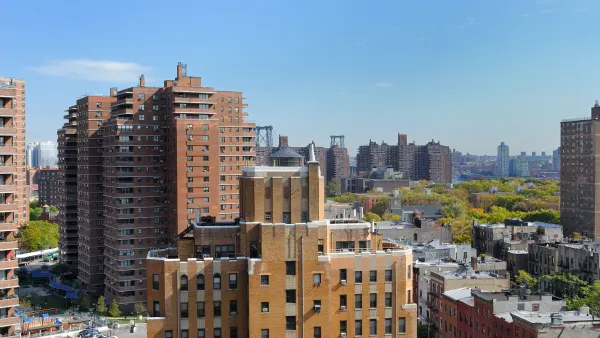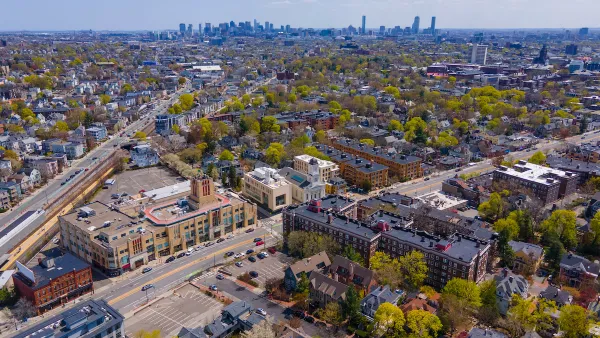The McKinsey Global Institute wants to help California build 3.5 million homes by 2025.

"California will have to build about 3.5 million homes over the next eight years, more than triple its current pace of construction, simply to keep up with expected population growth and hold down housing costs to affordable levels," begins an article by Conor Dougherty and Karl Russell.
That premise introduces the policy recommendations contained in a new report from the McKinsey Global Institute. The "Closing California's housing gap" provides a toolbox to help the state increase housing production in an era of scarcity, constrained by various levels of local controls. "Those ideas include streamlining grants of local permits, and using tax policy to withhold money from anti-growth cities that drag their feet on new housing," according to Dougherty and Russell.
The headlining policy idea, however, is to build on the vacant plots of land in the state's urban areas. The article includes maps of the Los Angeles region and the city of San Francisco, showing the broad swaths of land available to build "225,000 or so homes and apartments."
An article on the McKinsey Global Institute website has more on the methodology and findings of the study:
To understand the nature of the problem, we built a quantitative model to identify California’s housing affordability gap by household and location. To do this, we segmented the state’s more than 12 million households into 34 housing markets and 16 income bands, and assessed each household’s ability to afford housing in their local market. We learned that 50 percent of California’s households cannot afford the cost of housing in their local market. Virtually none of California’s low-income and very-low-income households can afford the local cost of housing.
FULL STORY: No Vacancies in California? Housing Report Begs to Differ

Analysis: Cybertruck Fatality Rate Far Exceeds That of Ford Pinto
The Tesla Cybertruck was recalled seven times last year.

National Parks Layoffs Will Cause Communities to Lose Billions
Thousands of essential park workers were laid off this week, just before the busy spring break season.

Retro-silient?: America’s First “Eco-burb,” The Woodlands Turns 50
A master-planned community north of Houston offers lessons on green infrastructure and resilient design, but falls short of its founder’s lofty affordability and walkability goals.

Test News Post 1
This is a summary

Analysis: Cybertruck Fatality Rate Far Exceeds That of Ford Pinto
The Tesla Cybertruck was recalled seven times last year.

Test News Headline 46
Test for the image on the front page.
Urban Design for Planners 1: Software Tools
This six-course series explores essential urban design concepts using open source software and equips planners with the tools they need to participate fully in the urban design process.
Planning for Universal Design
Learn the tools for implementing Universal Design in planning regulations.
EMC Planning Group, Inc.
Planetizen
Planetizen
Mpact (formerly Rail~Volution)
Great Falls Development Authority, Inc.
HUDs Office of Policy Development and Research
NYU Wagner Graduate School of Public Service




























